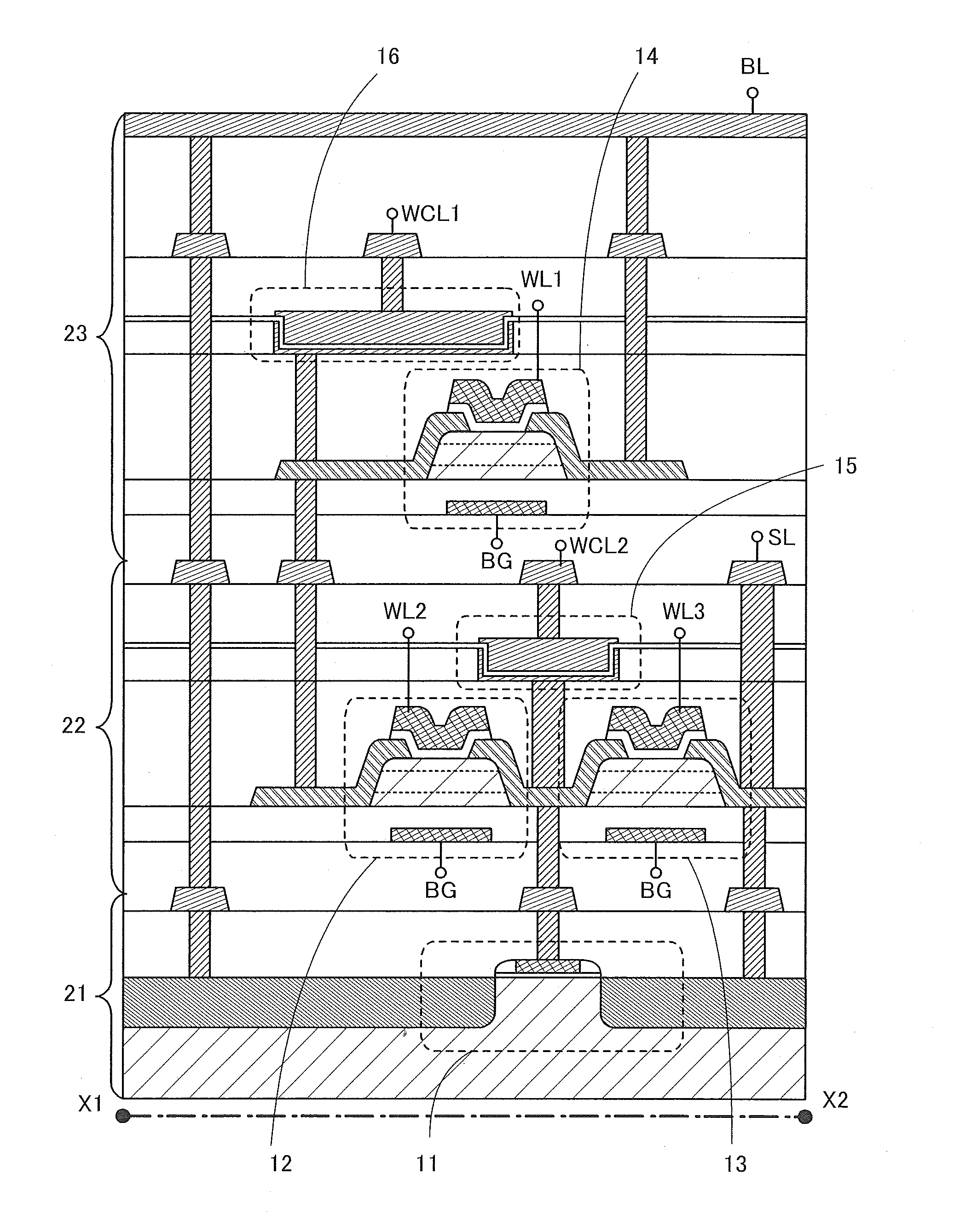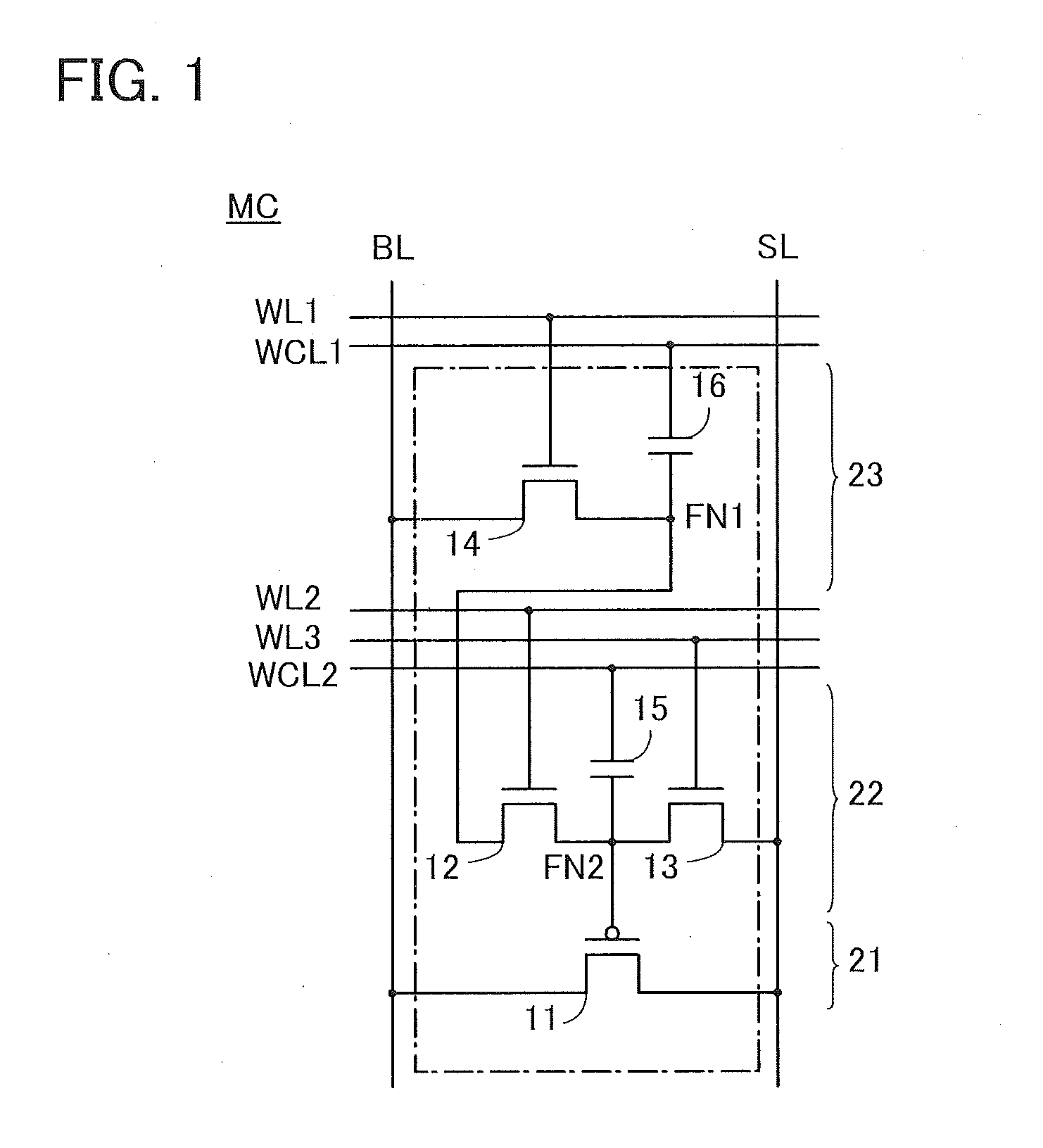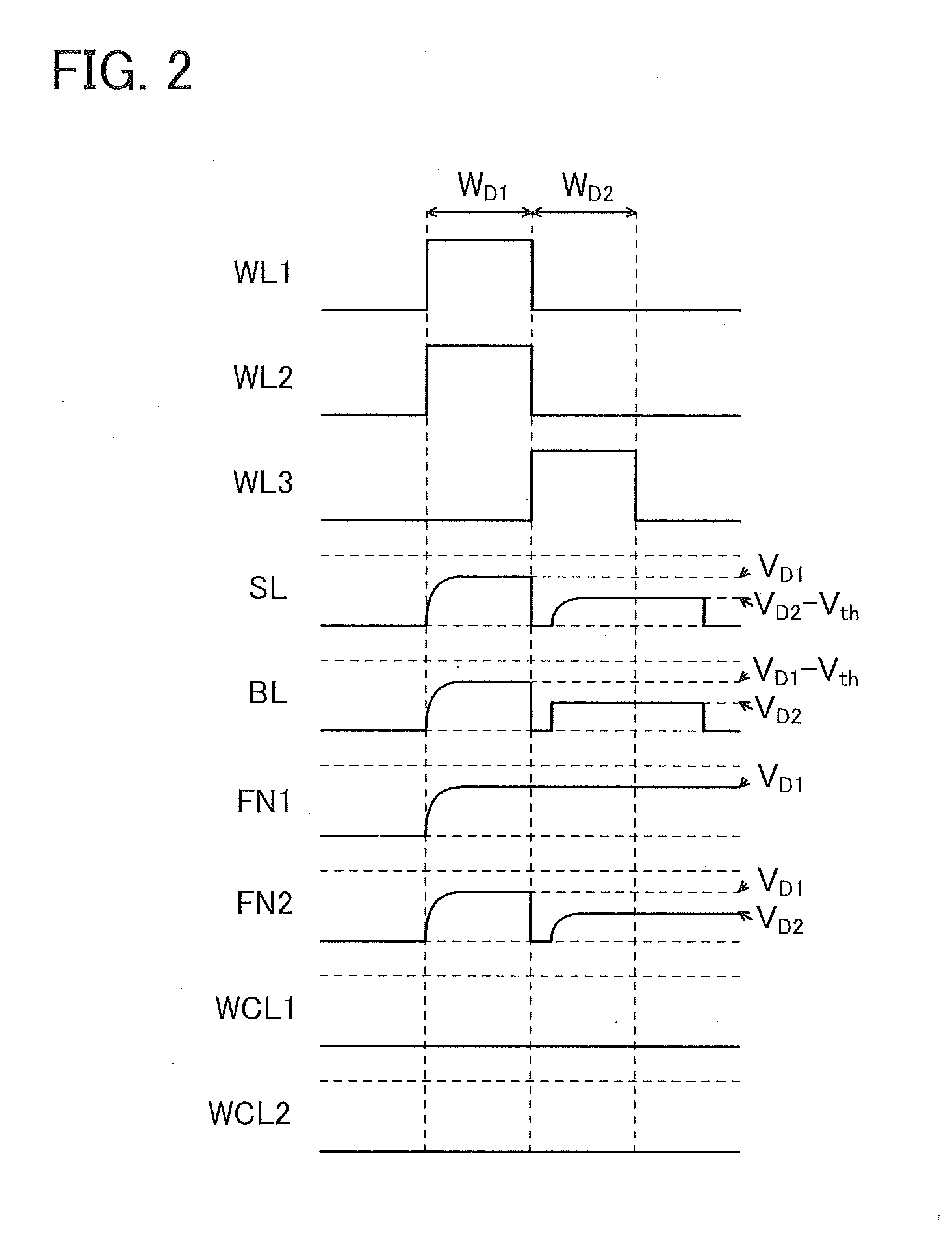Semiconductor Device and Electronic Device
a technology of semiconductor devices and electronic devices, applied in semiconductor devices, digital storage, instruments, etc., can solve the problems of data reliability decline, data is difficult to determine, data voltage increase to improve memory capacity is difficult to achieve, etc., to achieve high data reliability, large memory capacity, and small circuit area of memory cells
- Summary
- Abstract
- Description
- Claims
- Application Information
AI Technical Summary
Benefits of technology
Problems solved by technology
Method used
Image
Examples
embodiment 1
[0071]In this embodiment, a configuration of a memory cell included in a semiconductor device of one embodiment of the disclosed invention is described.
[0072]The memory cell described in this embodiment can retain multilevel data. The memory cell includes a plurality of data retention portions. The plurality of data retention portions each retain a plurality of voltage levels (data voltages) corresponding to multilevel data to increase memory capacity per memory cell. The data voltages are retained in such a manner that transistors having a low off-state current retain charges corresponding to the data voltages.
[0073]In the case where a memory cell including two data retention portions retains 8-bit data, for example, the two data retention portions each retain 4-bit data. In this case, each of the two data retention portions retains a data voltage corresponding to 4-bit data, i.e., 16 levels. The data voltage is converted, in accordance with the 16 levels, into the original data. A...
embodiment 2
[0141]In this embodiment, configurations of memory cells that are different from those in Embodiment 1 are described. Note that for the description of the same portions as those in Embodiment 1, Embodiment 1 is referred to, and the repeated description is omitted.
[0142]Specifically, a data voltage is written to a first data retention portion from a first wiring through a transistor for reading the data voltage, a second wiring, and a second data retention portion. A data voltage is written to the second data retention portion from the first wiring through a transistor for reading the data voltage and the second wiring. With such a configuration, writing the data voltage to the first data retention portion and writing the data voltage to the second data retention portion can be performed without meeting of the data voltages. Furthermore, the data voltage written to the data retention portion can be written as a data voltage (VD−Vth) obtained by subtracting a threshold voltage (Vth) o...
embodiment 3
[0188]In this embodiment, an example of a random access memory (RAM) including the memory cell illustrated in FIG. 1 is described. Description below is made with reference to FIG. 14, FIG. 15, FIG. 16, and FIG. 17. A RAM is referred to as a memory device or a semiconductor device in some cases.
[0189]FIG. 14 is a block diagram illustrating a configuration example of a RAM including the memory cell MC in FIG. 1.
[0190]A RAM 110 illustrated in FIG. 14 includes a memory cell array MCA including a plurality of memory cells MC in FIG. 1, a row decoder 111, a column decoder 112, and an A / D converter 113. In the RAM 110, the memory cells MC are arranged in a matrix of in rows and n columns (in and n are each a natural number of 2 or more).
[0191]In FIG. 14, wirings WL1[0] to WL1[m−1], wirings WCL1[0] to WCL1[m−1], wirings WL2[0] to WL2[m−1], wirings WL3[0] to WL3[m−1], wirings WCL2[0] to WCL2[m−1], wirings BL[0] to BL[n−1], and wirings SL[0] to SL[n−1] are provided.
[0192]In the memory cell ar...
PUM
 Login to View More
Login to View More Abstract
Description
Claims
Application Information
 Login to View More
Login to View More - R&D
- Intellectual Property
- Life Sciences
- Materials
- Tech Scout
- Unparalleled Data Quality
- Higher Quality Content
- 60% Fewer Hallucinations
Browse by: Latest US Patents, China's latest patents, Technical Efficacy Thesaurus, Application Domain, Technology Topic, Popular Technical Reports.
© 2025 PatSnap. All rights reserved.Legal|Privacy policy|Modern Slavery Act Transparency Statement|Sitemap|About US| Contact US: help@patsnap.com



